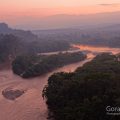🌈 What Color Is a River, Really?

Rivers aren’t just blue — they can be green, black, red, or even multicolored. Discover what determines a river’s color with stunning real-world examples.
It’s not always blue color— and definitely not always clear.
Some rivers shimmer jade-green beneath jungle canopies. Others rush chocolate-brown, swollen with silt and stories from upstream. A few appear inky black, reflecting the sky like a mirror, while rare wonders bloom in reds, purples, and golds as if painted by the seasons themselves.
Rivers wear an entire palette depending on their mood, minerals, and surroundings. The color you see is a living reflection of what flows within — glacial melt, volcanic ash, forest tannins, algae blooms, or ancient stones dissolved in time.
So before you assume a river should be crystal blue, take a closer look — and let’s dive into the kaleidoscope of river colors and the fascinating forces behind them. 🎨👇
🔵 Blue or Turquoise Color
There’s something almost unreal about a river that shimmers in shades of blue — from icy crystal to tropical turquoise. This striking color is often the result of glacial meltwater, limestone bedrock, or fine suspended particles that scatter sunlight just right. The water may be frigid, but it glows with a kind of purity that feels almost otherworldly.
When glaciers grind against rock, they create what’s called rock flour — ultra-fine particles that remain suspended in the water and reflect mainly the blue and green wavelengths of sunlight. Similarly, rivers that flow over limestone or marble often appear turquoise due to the mineral content and high clarity.

💧 Example: The Soča River, Slovenia — one of the most breathtaking rivers in Europe. Fed by the Julian Alps, it gleams a surreal shade of turquoise as it carves through narrow canyons and peaceful meadows. Its waters are so clear that you can often see trout darting beneath the surface — if you’re brave enough to withstand its icy embrace.
💠 Also see: The Blue River in British Columbia, the Verzasca River in Switzerland, and the Valle Verzasca region — all famous for glassy, blue-green clarity caused by clean stone beds and mineral-rich water.
These rivers are more than beautiful — they are windows into pristine alpine ecosystems, where geology and glaciation meet in vibrant color.
💚 Jade or Emerald Green Color
Not all green rivers are the same — some wear a soft, milky jade, while others shimmer like polished emerald. The source of this verdant color often lies in a mix of algae growth, mineral-rich waters, and the deep reflections of forest canopies. In calm, slow-moving rivers especially, green is the language of life — a mirror of the lush world above and the living systems within.
Subtle variations in the chlorophyll of aquatic plants, dissolved minerals like calcium or copper, and even the angle of sunlight can transform a clear stream into a ribbon of green silk. Where dense forests flank a riverbank, the canopy reflects down in waves, enhancing the natural color and wrapping the water in leafy tones.
🌿 Example: The Li River, China — winding through a dreamscape of towering karst mountains, its pale jade hue is both natural and poetic. The water here is tinted by silt and algae, but it’s the shadows of the limestone peaks and bamboo groves that complete the masterpiece — turning every boat ride into a watercolor painting in motion.
🌲 Example: The Mrežnica River, Croatia — a hidden marvel flowing through dense woodland and dotted with over 90 natural travertine waterfalls. The water is filtered as it passes over these limestone barriers, giving it a deep green clarity unlike anything else in the region. It’s a river that feels alive — cool, clean, and endlessly serene.
Green rivers often feel the most enchanted. They’re the ones that invite you to sit and listen, to kayak slowly between mossy banks, or to plunge into a pool and float beneath branches that seem to touch the sky.
🤎 Brown or Muddy Color
Some rivers don’t shimmer or glow — they churn. They thunder downstream in shades of chocolate milk, clay, and rust, heavy with the earth they carry. These are the working rivers of the world — swollen with sediment, silt, and organic matter, especially after heavy rains or during flood season.
Far from dirty or impure, this color tells a story of erosion, movement, and sheer force. When a river cuts through mountains, farmland, or rainforest, it becomes a conveyor belt for soil, sand, and stone — carving valleys, feeding floodplains, and shaping continents.

🌪️ Example: The Amazon River, South America — a behemoth of sediment and strength. It carries an estimated 1.3 million tons of silt into the Atlantic every day. Its color reflects the rainforest’s never-ending cycle of growth and decay, making it one of the most fertile and dynamic waterways on Earth.
🌾 Example: The Mississippi River, USA — a vast, muddy artery flowing through the American heartland. Centuries of farming, deforestation, and urban development upstream have turned its waters murky brown, especially after storms, when runoff from thousands of tributaries empties into its flow. Its hue is a living history of a land constantly reshaped by water.
These rivers may not sparkle, but they are alive with purpose. They feed crops, build deltas, and carry nutrients that fuel entire ecosystems. In every swirling eddy of brown, there’s a whisper of ancient mountains and tomorrow’s soil.
⚫ Black Color
Still, quiet, and impossibly dark — black rivers carry an eerie kind of beauty. Their color doesn’t come from pollution or depth alone, but from tannins, the natural compounds released by decaying leaves, wood, and organic matter in forested or swampy regions.
These tannins stain the water like steeped tea, turning it into a mirror — glassy and ink-dark, often reflecting the sky, trees, and clouds with haunting clarity. Despite their shadowy appearance, blackwater rivers are often among the cleanest, low in nutrients and oxygen, which slows algae growth and keeps the water clear (just dark).
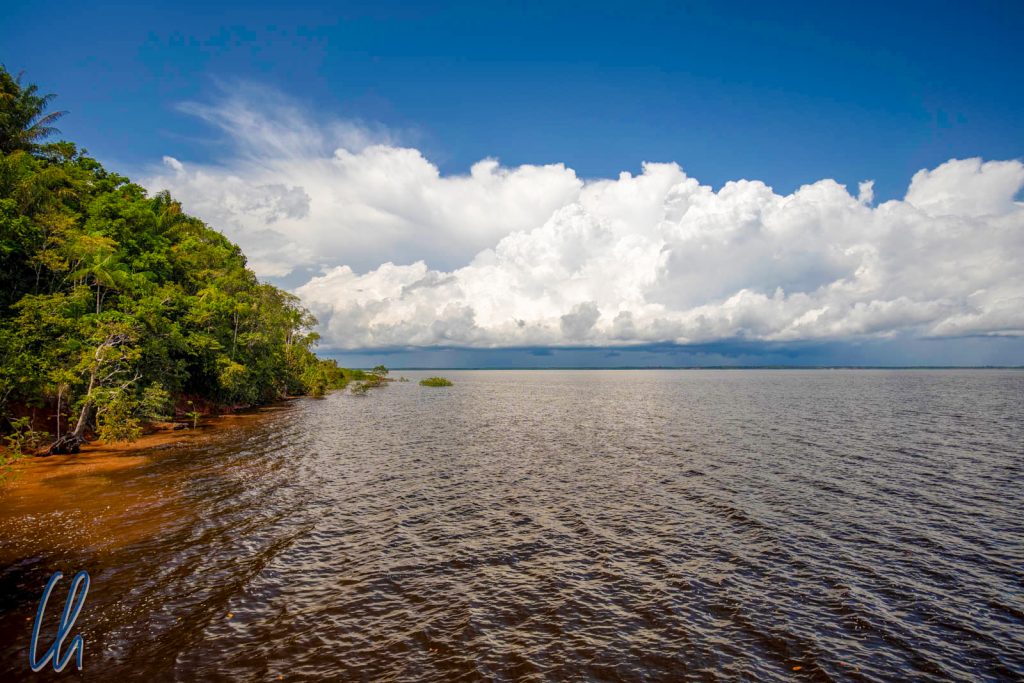
🍂 Example: The Rio Negro, South America — one of the Amazon’s major tributaries and the world’s largest blackwater river. Flowing through dense rainforest, its inky waters absorb sunlight rather than reflect it, creating a surreal contrast when it meets the muddy Amazon at the “Meeting of Waters.” Here, black and brown flow side by side — a phenomenon visible even from space.
🖤 Black rivers feel ancient and still — places where time moves slower, sound carries farther, and shadows deepen. They are the soul of the rainforest, quietly carrying its essence downstream.
🔴 Red or Rusty Color
When a river runs red, it demands attention. This fiery color can emerge naturally — or as a signal of human impact. The source is typically iron oxide, the same compound that gives rust its color, or other metal-rich minerals leaching into the water. In some cases, mining runoff accelerates the process, turning streams into scarlet veins that stain the landscape.
In mineral-rich regions, iron and sulfur compounds oxidize when they meet air and water, coloring the river in hues that range from deep crimson to burnt orange, amber, or even golden red. These waters may look alien — even toxic — but they often hold clues to the planet’s raw, volcanic, and metallic heart.
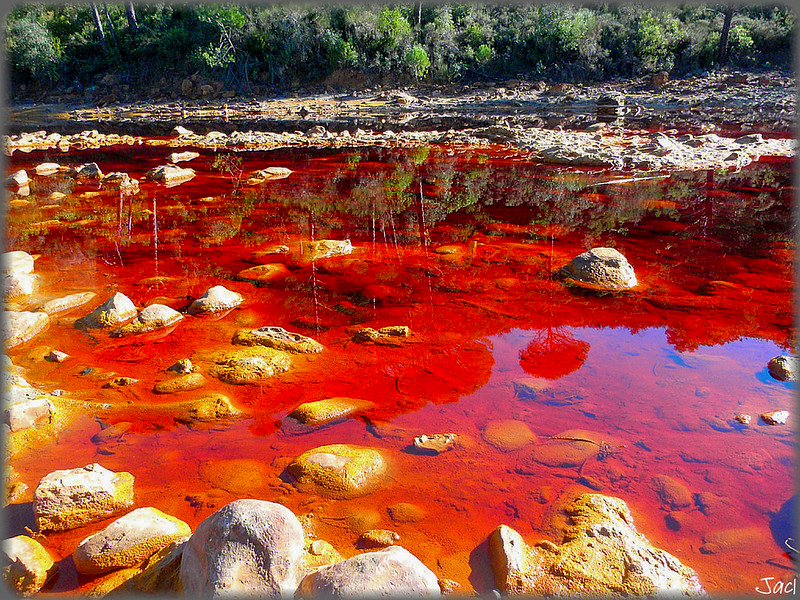
⛏️ Example: The Rio Tinto, Spain — perhaps the most famous red river in the world. Flowing through a region with 5,000 years of mining history, its blood-red waters are colored by iron, copper, and sulfur minerals. It’s so surreal and acidic, scientists have even studied it as an analog for life on Mars. The name itself means “Red River” — and it lives up to it, glowing like molten metal under the sun.
🏞️ Example: The Hocking River, Ohio — a more subtle red-orange stain sometimes seen due to historic coal mining. Iron-laced drainage from old mines seeps into the watershed, leaving behind rust-colored hues, especially after heavy rainfall or near abandoned industrial zones.
Red rivers are rare — and they carry a certain urgency. Whether shaped by nature or industry, they remind us that the color of a river can also be a warning, a clue to the minerals below, or a legacy of human hands reshaping the earth.
🌈 Color-Changing Wonders
Some rivers defy the imagination — not just one color, but a cascade of hues as if the water itself were painted by an artist. These rare rivers “bloom” under just the right combination of light, water level, temperature, and aquatic life, especially unique riverbed plants that explode into color at certain times of year.
These aren’t chemical or artificial marvels — they’re natural masterpieces, formed when vibrant algae or endemic aquatic plants flourish in pristine, shallow waters and are illuminated by sunlight like stained glass.

🎨 Example: The Caño Cristales, Colombia — often called “the river of five colors.” Located in the remote Serranía de la Macarena National Park, it remains dry for part of the year and floods during the wet season. But in the magical window between — usually from July to November — the aquatic plant Macarenia clavigera transforms the riverbed into a flowing kaleidoscope of crimson reds, pinks, sunny yellows, mossy greens, and deep purples. It’s not just a visual marvel — it’s an ecological treasure found nowhere else on Earth.
💡 These rivers are fragile and often protected, with strict tourism rules to preserve their rare conditions. They’re reminders that sometimes, rivers don’t just reflect the world — they become something otherworldly.
🌟 Golden Rivers
Not every river is born golden — but nearly all can wear it, if only for a fleeting moment.At sunrise or sunset, rivers turn to liquid gold. Sunlight drapes itself across the surface, painting ripples in warm amber, copper, and honey. These moments aren’t about what’s in the water — but what shines upon it.
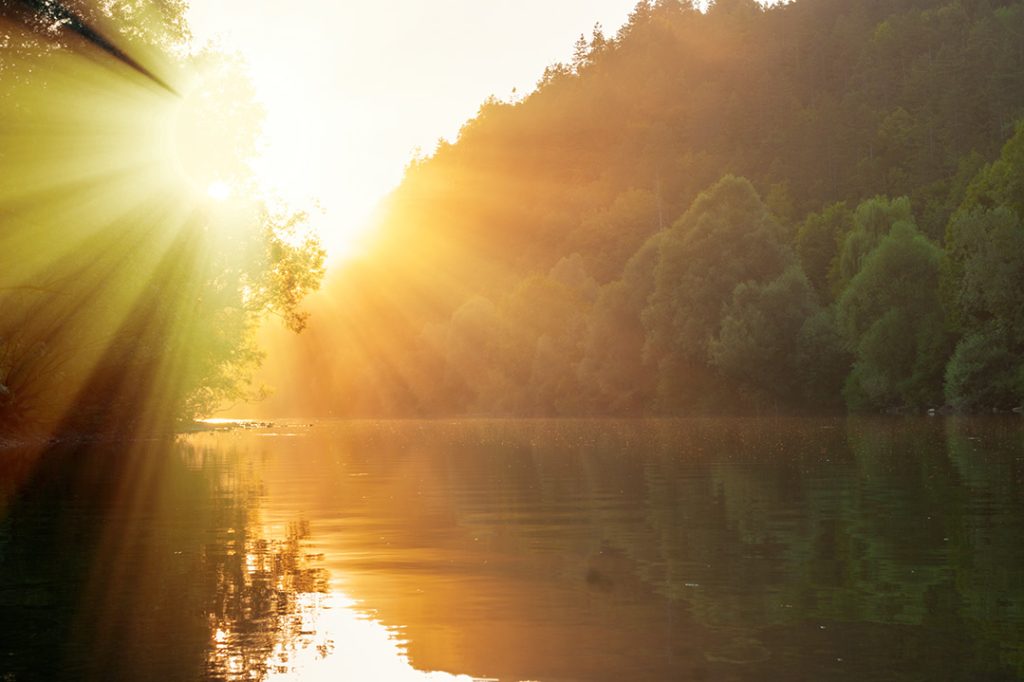
✨ Example: The Danube at dawn in Budapest, glowing like molten bronze beneath the Parliament.
✨ Example: A jungle river in Borneo, catching fire in the reflection of a setting sun.
Gold is the river’s most romantic color — a brief transformation, like a whispered secret between light and water.
When Rivers and Colors Mix (Confluences) 🌊🎨
Few natural phenomena are as mesmerizing as a river confluence — the meeting point where two rivers flow side by side, each retaining its own distinct color, like brushstrokes that refuse to blend.
This phenomenon isn’t just beautiful — it’s a live demonstration of physics, chemistry, and geology colliding. Differences in temperature, sediment load, flow speed, mineral content, or acidity can keep two rivers visually separate for kilometers, swirling but not merging immediately.

🖤🤎 The Amazon & Rio Negro (Brazil)
One of the most iconic examples, where the inky black waters of the Rio Negro, stained by organic tannins, meet the pale brown, sediment-rich Amazon. For several kilometers, the rivers dance alongside each other — black and brown in parallel lanes — before slowly mingling.
💧🤍 The Rhône & Arve Rivers (Switzerland)
In Geneva, the glacier-blue Rhône meets the murky grey Arve, which flows down from the Alps carrying heavy silt. Their confluence is so stark it looks photoshopped — an electric cyan crashing into a stormy beige.
💚🤎 The Alaknanda & Bhagirathi (India)
These rivers merge to form the sacred Ganges, and at their meeting point in Devprayag, the greenish hue of the Alaknanda flows against the muddier Bhagirathi in a visual metaphor of unity and contrast.
These confluences are not just scenic — they are symbolic. They remind us that even forces as powerful as rivers can meet without losing their identity. Color, in a river, is a fingerprint. And at confluences, we see those fingerprints swirl together like living watercolors.
Every Hue Has a History
✨ River color isn’t just about what’s above — it’s shaped by what’s in and around it: the minerals hidden in mountain rock, the plants whispering beneath the surface, the angle of sunlight on a still morning, the rush of seasonal rain, or the quiet bloom of algae under the heat of a summer sun.
It’s chemistry and climate, sediment and shade, biology and time — all woven into a current that never stops moving.
Each river tells a different story in color. From jade valleys to rust-red canyons, blackwater jungles to multicolored miracles, these waterways are more than landscapes — they’re living brushstrokes across the Earth.
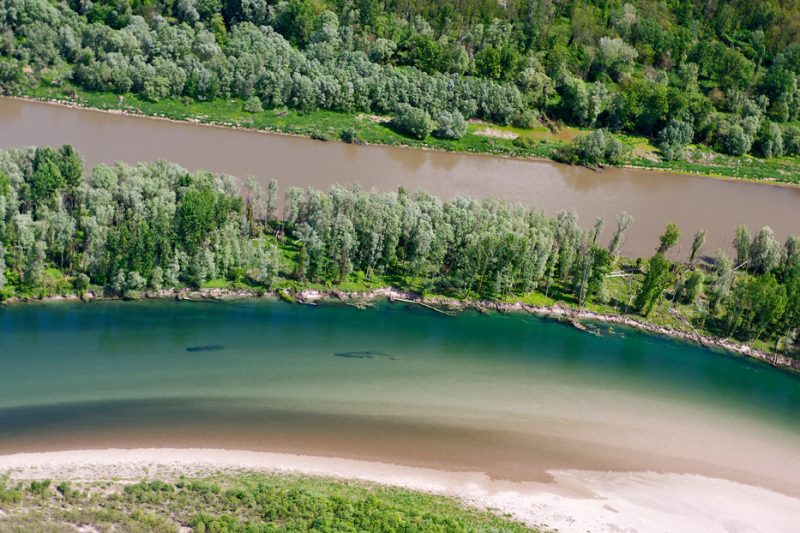
So next time you stand beside a river, ask yourself not just where it flows, but what it’s made of — and why it looks the way it does. Nature is never random, and every hue has a history.
💬 What river color have you seen that took your breath away? Share it below — we’d love to hear your story.


